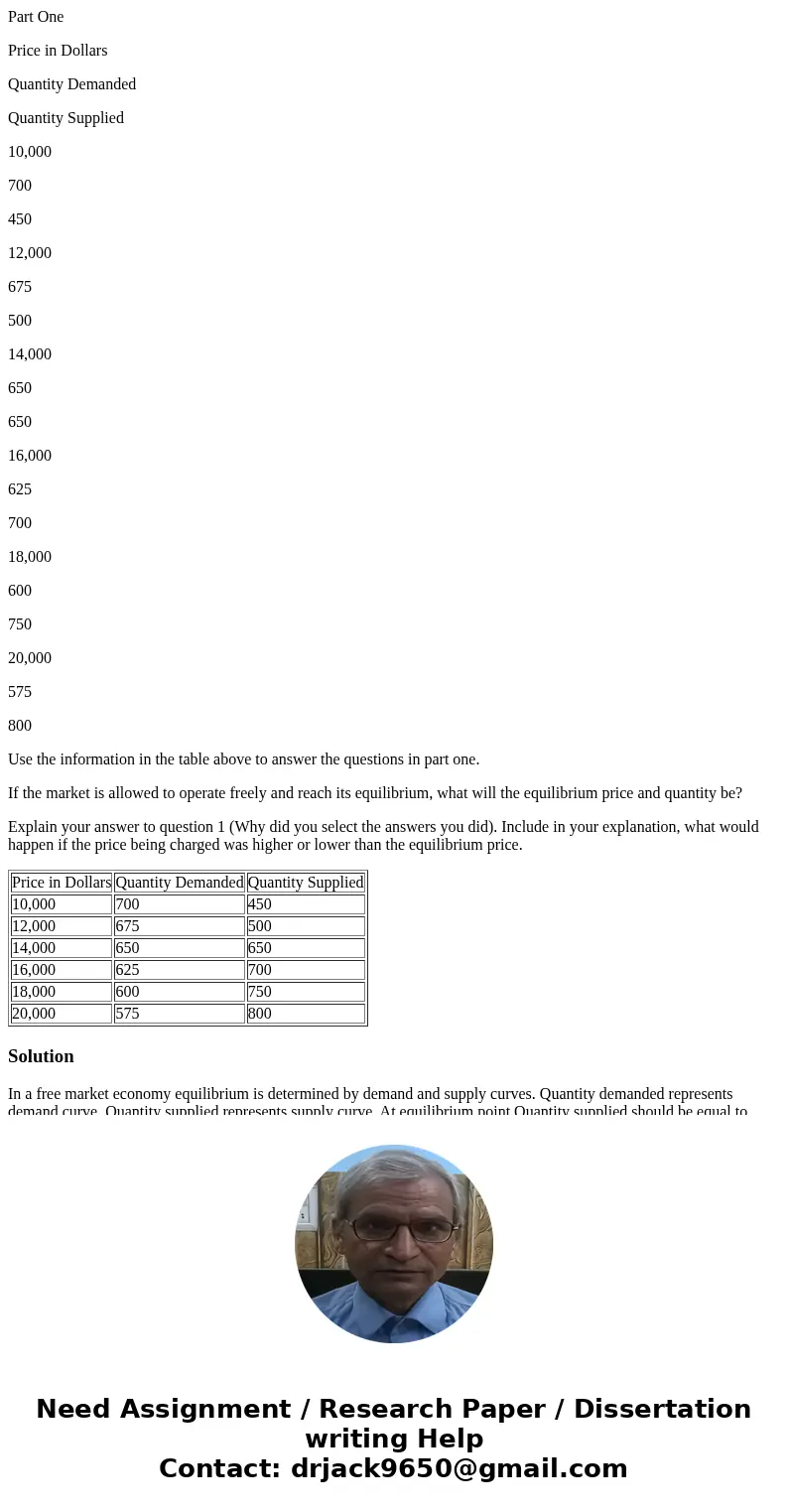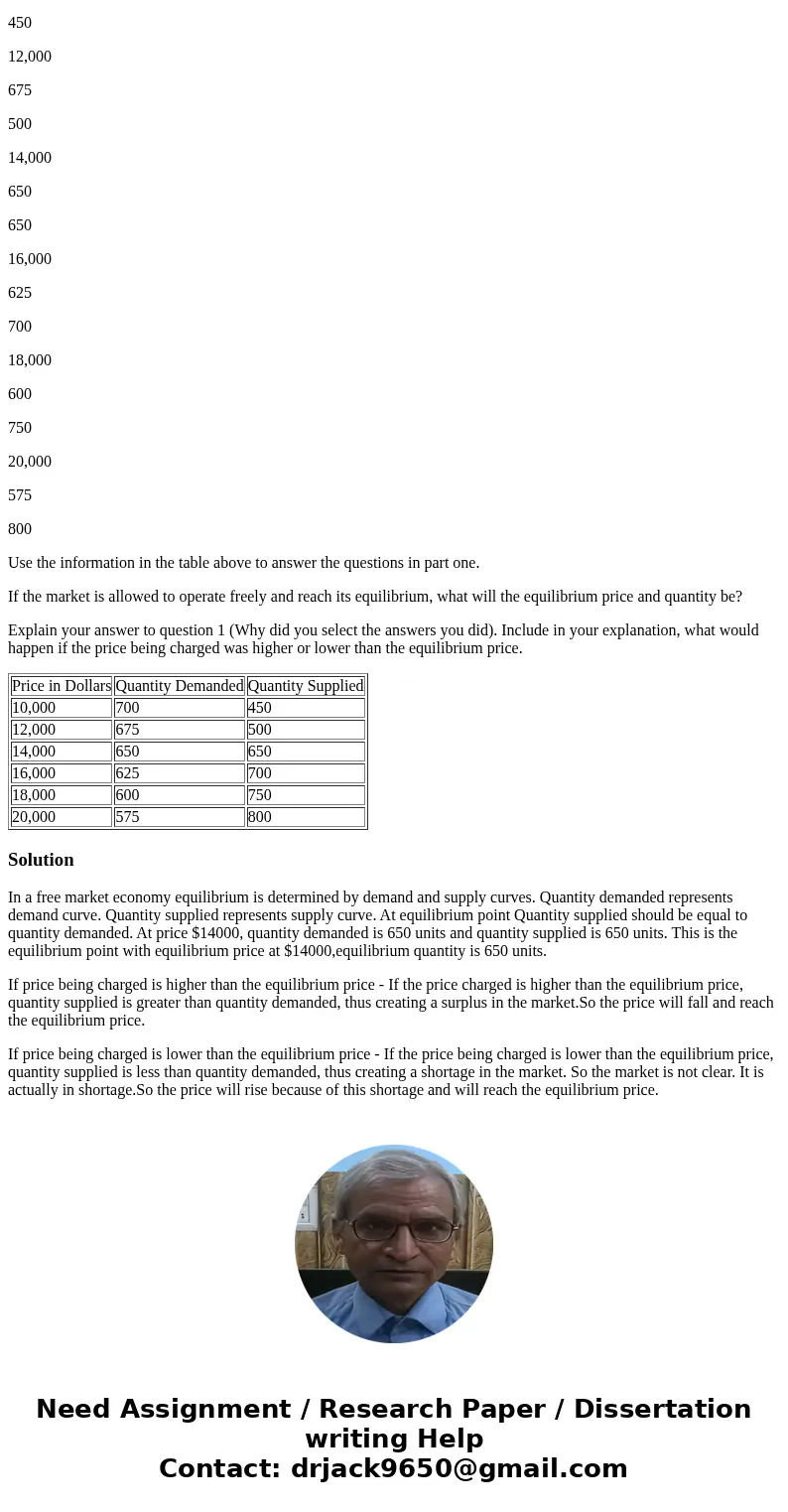Part One Price in Dollars Quantity Demanded Quantity Supplie
Part One
Price in Dollars
Quantity Demanded
Quantity Supplied
10,000
700
450
12,000
675
500
14,000
650
650
16,000
625
700
18,000
600
750
20,000
575
800
Use the information in the table above to answer the questions in part one.
If the market is allowed to operate freely and reach its equilibrium, what will the equilibrium price and quantity be?
Explain your answer to question 1 (Why did you select the answers you did). Include in your explanation, what would happen if the price being charged was higher or lower than the equilibrium price.
| Price in Dollars | Quantity Demanded | Quantity Supplied |
| 10,000 | 700 | 450 |
| 12,000 | 675 | 500 |
| 14,000 | 650 | 650 |
| 16,000 | 625 | 700 |
| 18,000 | 600 | 750 |
| 20,000 | 575 | 800 |
Solution
In a free market economy equilibrium is determined by demand and supply curves. Quantity demanded represents demand curve. Quantity supplied represents supply curve. At equilibrium point Quantity supplied should be equal to quantity demanded. At price $14000, quantity demanded is 650 units and quantity supplied is 650 units. This is the equilibrium point with equilibrium price at $14000,equilibrium quantity is 650 units.
If price being charged is higher than the equilibrium price - If the price charged is higher than the equilibrium price, quantity supplied is greater than quantity demanded, thus creating a surplus in the market.So the price will fall and reach the equilibrium price.
If price being charged is lower than the equilibrium price - If the price being charged is lower than the equilibrium price, quantity supplied is less than quantity demanded, thus creating a shortage in the market. So the market is not clear. It is actually in shortage.So the price will rise because of this shortage and will reach the equilibrium price.


 Homework Sourse
Homework Sourse